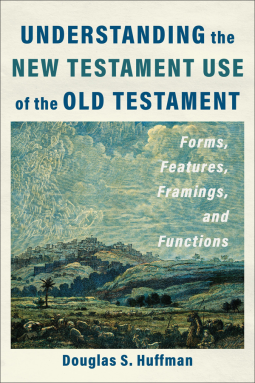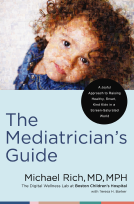
Understanding the New Testament Use of the Old Testament
Forms, Features, Framings, and Functions
by Douglas S. Huffman
This title was previously available on NetGalley and is now archived.
Send NetGalley books directly to your Kindle or Kindle app
1
To read on a Kindle or Kindle app, please add kindle@netgalley.com as an approved email address to receive files in your Amazon account. Click here for step-by-step instructions.
2
Also find your Kindle email address within your Amazon account, and enter it here.
Pub Date Oct 15 2024 | Archive Date Oct 29 2024
Baker Academic & Brazos Press | Baker Academic
Talking about this book? Use #UnderstandingtheNewTestamentUseoftheOldTestament #NetGalley. More hashtag tips!
Description
New Testament scholar Douglas Huffman suggests a way beyond the impasse concerning the terminology used by scholars in the discipline. He offers a new approach to identifying and interpreting Old Testament quotations, allusions, and echoes by exploring not just the forms but also the features, framings, and functions of the New Testament use of the Old Testament. Huffman demonstrates the advantages of his approach by analyzing how the Old Testament is used in Luke-Acts and thus provides a model that can be applied to other New Testament authors' use of Old Testament Scripture.
Professors and students of the Bible, scholars, and pastors will value this work.
Advance Praise
“In the crowded field of New Testament use of the Old Testament, Huffman’s book stands out for its methodological rigor. Interacting with a broad range of the literature on this topic, Huffman proposes several taxonomies in an effort to bring some semblance of order to a confusing mishmash of approaches and methods. A genuine contribution.”—Douglas J. Moo, professor of biblical studies, emeritus, Wheaton College
“Had the evangelist Luke authored this book, perhaps he might have prefaced it along these lines: ‘Inasmuch as many have undertaken to compile a research methodology for the New Testament use of the Old Testament, it seemed good to me also, having followed for some time their proposals and theological intentions, to write a rigorous treatise on such matters for you, most excellent student of the Word, that you may gain expertise in this fascinating field of biblical research.’”—Radu Gheorghita, professor of biblical studies, Midwestern Baptist Theological Seminary
Available Editions
| EDITION | Other Format |
| ISBN | 9781540966407 |
| PRICE | $29.99 (USD) |
| PAGES | 288 |
Available on NetGalley
Featured Reviews
 Andrew P, Reviewer
Andrew P, Reviewer
Douglas S. Huffman’s Understanding the New Testament Use of the Old Testament is a scholarly yet accessible exploration of how New Testament (NT) authors engaged with the Old Testament (OT). Huffman’s work is deeply rooted in the belief that the NT is intricately connected to the OT, and that grasping this relationship is crucial for accurate biblical interpretation. The book serves as both an introduction and a significant contribution to the ongoing scholarly dialogue on the NT's use of the OT, particularly through the introduction of taxonomies that classify forms, framings, and functions.
Chapter 1: Introduction to Studying the New Testament Use of the Old Testament
Huffman begins by addressing the foundational relationship between the OT and NT, arguing that the two testaments are inseparably linked. He underscores that understanding this intricate connection is essential for a proper reading of the NT. The study of the NT's use of the OT is presented as not only important but vital for any serious engagement with New Testament texts.
Chapter 2: Form Classifications for the New Testament Use of the Old Testament
In this chapter, Huffman introduces a taxonomy of forms, focusing on the various ways NT authors reference the OT. He categorizes these references into citations, allusions, and echoes, each serving different purposes. Huffman explains that NT authors employed Scripture in diverse forms to achieve their theological and literary aims, and that any thorough assessment of these references must account for this variety.
Chapter 3: Features for Form Identification in the New Testament Use of the Old Testament
Huffman delves into the criteria for identifying OT references in the NT, such as vocabulary, word order, and the presence of introductory formulas. He emphasizes the importance of careful analysis, noting the complexities involved in recognizing the specific textual traditions that NT authors utilized. The freedom with which NT authors cite the OT is also discussed as a significant area of scholarly interest.
Chapter 4: Framing Classifications for the New Testament Use of the Old Testament
This chapter explores how NT authors frame their use of the OT, often incorporating interpretive traditions from later OT texts or Jewish writings. Huffman introduces the concept of "framing" as the method by which NT authors present their references to OT passages, illuminating their intentions and understanding of the OT in light of Christ.
Chapter 5: Function Classifications for the New Testament Use of the Old Testament
Huffman further categorizes the purposes for which NT authors use OT references, such as declarations, prophecy fulfillment, or theological illustration. He argues that understanding the function of an OT reference in the NT is key to grasping the full meaning of the NT text. These functions are not merely literary devices but are deeply theological, reflecting the NT authors’ perception of God’s ongoing work through Scripture.
Chapter 6: The New Testament Use of the Old Testament in Luke and Acts
Applying his taxonomies to the writings of Luke, Huffman analyzes how Luke uses the OT to structure his narrative of Jesus and the early church. He provides detailed examinations of specific citations and allusions, highlighting how Luke’s programmatic use of the OT underscores the continuity of God’s salvific plan. Luke’s interpretation of the OT is often seen through a Christological lens, with Jesus portrayed as the fulfillment of Israel’s Scriptures.
Appendix A: Apparent Citations Introduced in the New Testament but Difficult to Locate in the Old Testament
Huffman addresses challenging cases where NT citations lack clear counterparts in extant OT manuscripts. He suggests that these citations may reflect variant textual traditions or interpretive expansions, encouraging careful examination of Jewish interpretive practices to understand their origins.
Appendix B: A Select Bibliography for the New Testament Use of the Old Testament
This appendix provides a comprehensive bibliography for further study, highlighting key works in the field. Huffman encourages readers to engage with these resources to deepen their understanding, offering the bibliography as a starting point for those who wish to delve into the complexities of biblical interpretation.
Appendix C: Applying the New Taxonomy of Forms to the UBS5 and NA28 Indexes of Old Testament Citations and Allusions for Luke and Acts
Huffman offers a practical application of his taxonomies by analyzing the indexes of OT citations in critical editions of the Greek NT. He demonstrates how his classifications can clarify the nature of these references, revealing patterns in how NT authors engaged with OT texts and offering a more nuanced understanding of their usage.
Concluding Assessment
Understanding the New Testament Use of the Old Testament by Douglas S. Huffman is an indispensable resource for biblical scholars, theologians, and anyone interested in the complex relationship between the OT and NT. Huffman’s methodical approach, grounded in rigorous scholarship, provides a clear framework for interpreting how NT authors understood and applied OT texts.
Who Should Read This Book?
-Biblical Scholars and Theologians: Huffman’s taxonomies offer a fresh perspective on analyzing the NT’s use of the OT, making it an essential tool for academic study.
-Seminary Students and Pastors: The book serves as an excellent guide for sermon preparation and teaching on the interconnectedness of the OT and NT, offering practical tools for interpretation.
-Laypeople with a Deep Interest in Scripture: While scholarly, the book remains accessible to dedicated lay readers who wish to deepen their understanding of biblical interpretation.
Should You Purchase It? Absolutely. Understanding the New Testament Use of the Old Testament is a valuable addition to any theological library. Huffman’s insights are crucial for anyone seeking to explore the intricate connections between the OT and NT, and his practical tools for interpretation make this book not only informative but also highly useful for study and teaching.
 Yakub T, Educator
Yakub T, Educator
Huffman’s book, Understanding NT Use of OT, really stands out for its methodological research and I am amused with overall approach to discuss it. So, you need to read this book, to make your view about NT and OT in a balance way.
Douglas S. Huffman’s, Understanding the New Testament Use of the Old Testament is a solid entry-level text in the relatively new field of intertextuality. Without question this is a scholarly book however it is written in a very accessible style and the general reader will be able to grasp and follow along with the discussions. Understanding the connection between the testaments is foundation and then building from that Huffman write on Form classifications and their uses (citations, allusions, and echoes). He then discusses Form identification (criteria for identifying references in the Old Testament). From there Huffman moves into Framing classifications, the questions as to how the New Testament authors frame their use of the Old Testament. Huffman then addresses Function classifications and in a final chapter demonstrates all of the above using texts in the Gospel of Luke and the book of Acts.
#UnderstandingtheNewTestamentUseoftheOldTestament #NetGalley
“In the Old Testament the New is concealed, in the New the Old is revealed”
(Novum Testamentum in Vetere latet, Vetus Testamentum in Novo patet)
literal: New Testament in the Old lies, the Old Testament in the New is clear.
- St. Augustine, Quaest. in Hept. 2,73: PL 34, 623; cf. DV 16.
Within the Christian faith, there is an obvious connection between what is commonly referred to as the Old Testament (OT) and the New Testament (NT), with many of the NT authors being raised and well versed in the OT Scripture that they frequently referenced to varying intentions and purpose (hence the quote from St Augustine above). Recently there has been a resurgence of sorts to the intertextuality between the two in Christian studies and Huffman does a remarkable job presented the current state of research in an accessible manner that can’t help but contribute to a better understanding of both from the Christian perspective. After that, Huffman defines the various classifications and taxonomies by which we can evaluate the use of the OT in the NT, taking into account the Jewish exegetical methods/traditions (such Proem/Introduction, Midrash, Targum, Pesher and Peshat) and literary tools (such allegory, allusion, conflation, echo, paraphrase, recollection, typology, et al) available at the time the NT was written in order to better understand the author’s intent and purpose in his OT references using several different taxonomies of framing, form and function.
All of this takes place in the first third of the book, with the remaining parts taken up with appendices, citations, glossary, indices and call outs … so there is plenty there to support a deep dive into the topic.
I was given this free advance reader copy (ARC) ebook at my request and have voluntarily left this review.
#UnderstandingtheNewTestamentUseoftheOldTestament #NetGalley.
Readers who liked this book also liked:
Publishers Lunch
General Fiction (Adult), Nonfiction (Adult), Teens & YA












